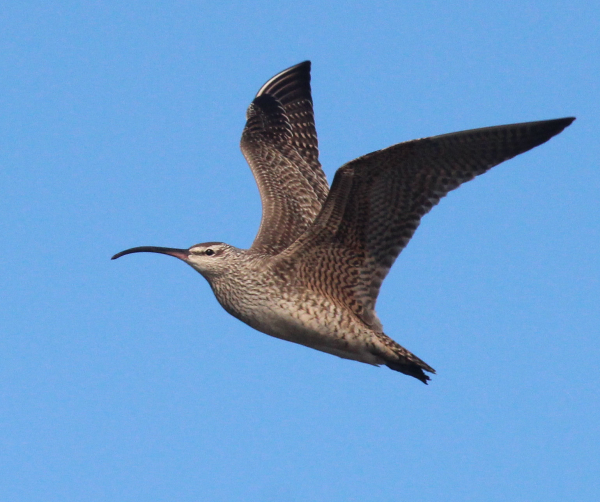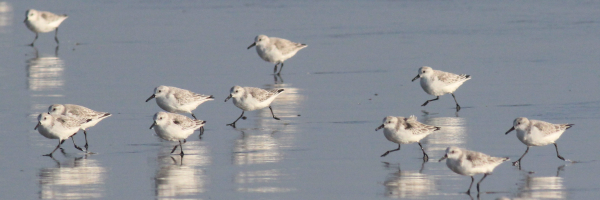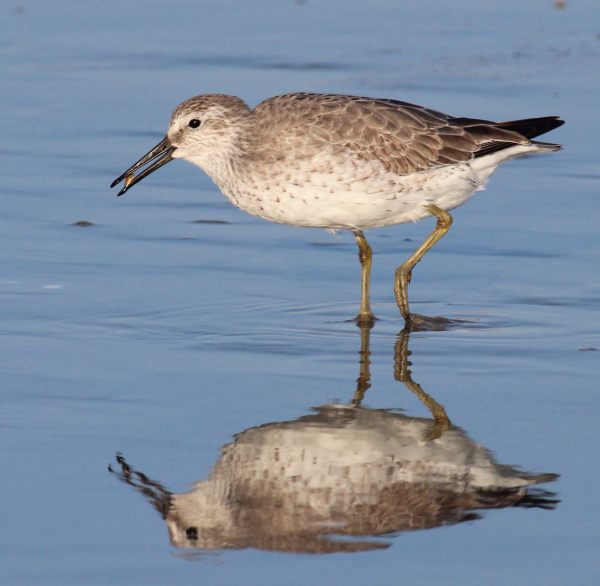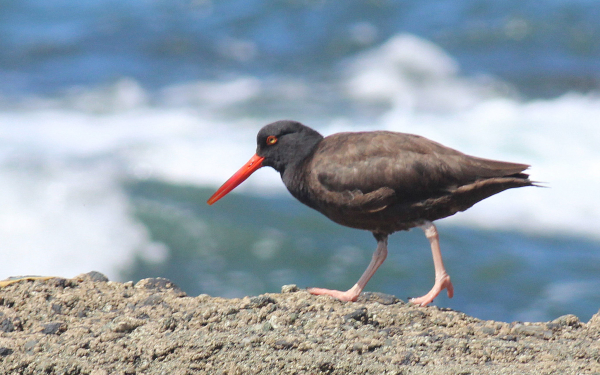
Whimbrels will soon migrate from nesting sites in the Canadian Arctic and sub-Arctic to wintering sites in northeast South America.

Between nesting and wintering areas, shorebirds like this Red Knot stop at important feeding and roosting areas.

Wintering Sanderlings congregate in flocks during winter and during migration stopovers.

Black Oystercatchers are coastal species with specialized feeding requirements and habitat needs (photos by Paul Konrad).
|
The Western Hemisphere Shorebird Reserve Network (WHSRN) is leading hemisphere-wide efforts to help to protect shorebirds and their critical habitats through a network of key shorebird sites across the Americas. The WHSRN has 107 sites in the Network that stretches across 17 participating countries and includes 412 partners. In all, the WHSRN includes 38 million acres of shorebird habitat reaching from sites in Alaska to southern Argentina, protecting critical nesting, wintering, and migration habitats throughout the Western Hemisphere.
Shorebirds as a group are experiencing the most dramatic declines of any group of birds. Some species that undertake hemispheric migrations rely on specific habitats and food sources to survive, but these resources are increasingly under threat. Hence, establishing a Network of essential shorebird conservation sites is improving their chances of survival, annually and for the future.
The WHSRN uses a series of effective plans to work with each site, including site assessment, shorebird monitoring, good governance, community engagement, outreach resources, ecosystem services, site modifications, and linking sites within the network.
The success of WHSRN for shorebird conservation lies in the hands of the partners working and cooperating at each site. Site partners must communicate the urgency of shorebird conservation to their communities and implement effective place-based conservation actions. WHSRN helps connect sites to each other, shares the latest science and resources, and highlights the importance of a site on an international level. As the number of sites in the Network grows, so too grows its strength as a force for shorebird conservation, and its ability to support site partners in this critical work. For more information about the Western Hemisphere Shorebird Reserve Network, please visit https://whsrn.org/
The Shorebird Forum is an internet meeting place for discussions and constructive conversations about ways to conserve, protect, and improve conditions for shorebirds and their habitats. The Shorebird Forum was envisioned by the U.S. Shorebird Conservation Partnership and the USA Committee of the WHSRN). It is managed by the WHSRN Executive Office and Manomet’s Shorebird Recovery Program at https://shorebirdforum.org/
The executive office of the WHSRN is located at Manomet, which acts as a lead partner in the WHSRN and implements program strategies and operations under the direction of the WHSRN Hemispheric Council. Through its work with WHSRN, Manomet will continue to identify and conserve key sites across the Americas. You can learn more about the impressive work being conducted at Monomet’s Shorebird Recovery Program at https://www.manomet.org/project/shorebird-recovery/ and the WHSRN at https://whsrn.org/
Share your birding experiences anytime at editors2tbw@gmail.com